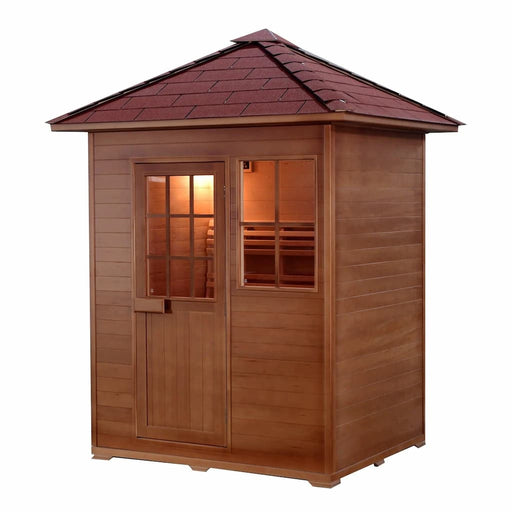The 10-Minute Rule for Traditional Sauna
The 10-Minute Rule for Traditional Sauna
Blog Article
Rumored Buzz on Traditional Sauna
Table of ContentsThe 10-Second Trick For Traditional SaunaWhat Does Traditional Sauna Do?All about Traditional SaunaIndicators on Traditional Sauna You Should KnowGetting My Traditional Sauna To Work
The majority of the weight lost in a sauna is water loss and is re-gained upon rehydrating. Without a question sauna can be a vital component of a healthy and balanced weight loss program. To check out the differences between conventional and IR saunas, I will certainly divide these into proven, academic, and made distinctions.Thus, the hottest point in the saunawhich goes to the ceiling directly above the sauna heateris commonly in between 185 and 190 F. Claims that a traditional sauna exceeds 200 F is simply not true and not applicable for electrical saunas marketed in the United States. The temperature level for a far-infrared sauna is usually set between 120 and 140 F; nevertheless, unlike the typical sauna, the goal in and IR room is not to achieve a high temperature level.
As a result of this, the temperature level difference is virtually pointless, given that profuse sweating leads to both sauna types, but the method of warming the body is different. In an IR sauna the bather will certainly really feel warm and will sweat profusely, but at much lower temperatures (Traditional Sauna). Thus, if the objective is to spend longer amount of times in the sauna, the IR sauna is a great selection
When a standard sauna has actually been properly heated up, the sauna walls are cozy, the air temperature has actually accomplished set temperature and the rocks are very warmed. As an interesting side note, the heated wall surfaces and the rocks are giving off far-infrared heat, incorporated with the heated air, to create an "enveloping heat".
Traditional Sauna Fundamentals Explained

When the high temperature level is attained, the elements cycle on and off to maintain the high temperature. The majority of typical sauna customers appreciate pouring water over the rocks to create steam to raise sauna humidity degrees. The benefits of putting water over the rocks include: making the room much more comfy, dampening the nasal passages, and permitting the usage of aromatherapy by mixing important oils with the water.

When the energy gets in the body, it creates the body temperature level to increase and ultimately results in sweat. In an infrared sauna it is very important for the emitters/heaters to continue to be on almost constantly. Considering that there is no mass of rocks to maintain heat, the sauna will certainly cool if the emitters shut down.
As pointed out above, the sauna bather in an infrared space intends to position himself before operating emitters to obtain optimal take advantage of the warm. The heating time for both spaces can be very various, depending on how the spaces are made use of. For a conventional sauna, a bather must allow 30-40 minutes for the area to achieve a desired temperature level and to properly pre-heat the rocks.
The Facts About Traditional Sauna Revealed
A well built sauna will normally attain a temperature get redirected here level of 150-160 F in regarding 30-40 mins. For hotter temperature levels, the room may require to heat for a longer period.

Standard saunas often tend to be bigger (therefore use more electrical energy) than infrared saunas, although standard saunas are certainly available in one and 2 individual sizes also. For a two-person typical sauna, 5x6 or 5x7 size is most popular. The leading bench can conveniently seat great site two or 3 people and is also long enough to exist down throughout the sauna session.
The Ultimate Guide To Traditional Sauna
The typical expense per kWH of electrical power in the united state is approximately $0.11, so a 4.5 kW heater will cost roughly $.50 to compete one hour, if the heating unit runs continually for one hour. Typically a sauna heating system will compete 75% of the very first hour and 50% of succeeding hours on since the elements cycle once the established temperature is accomplished.

Ultimately, there is a rarely discussed difference in the social experience between both spaces. While our society has actually shed a few of the social benefit of the standard sauna experience, it can be extremely socially fulfilling (Traditional Sauna). From household time in the sauna, to heart-felt discussions with better halves, to sauna partiesthe traditional sauna experience can result in intimate interacting socially
Traditional Sauna - An Overview
The majority of greater end infrared areas consist of tinted light treatment, Get More Info noise systems and full-glass fronts.
Report this page